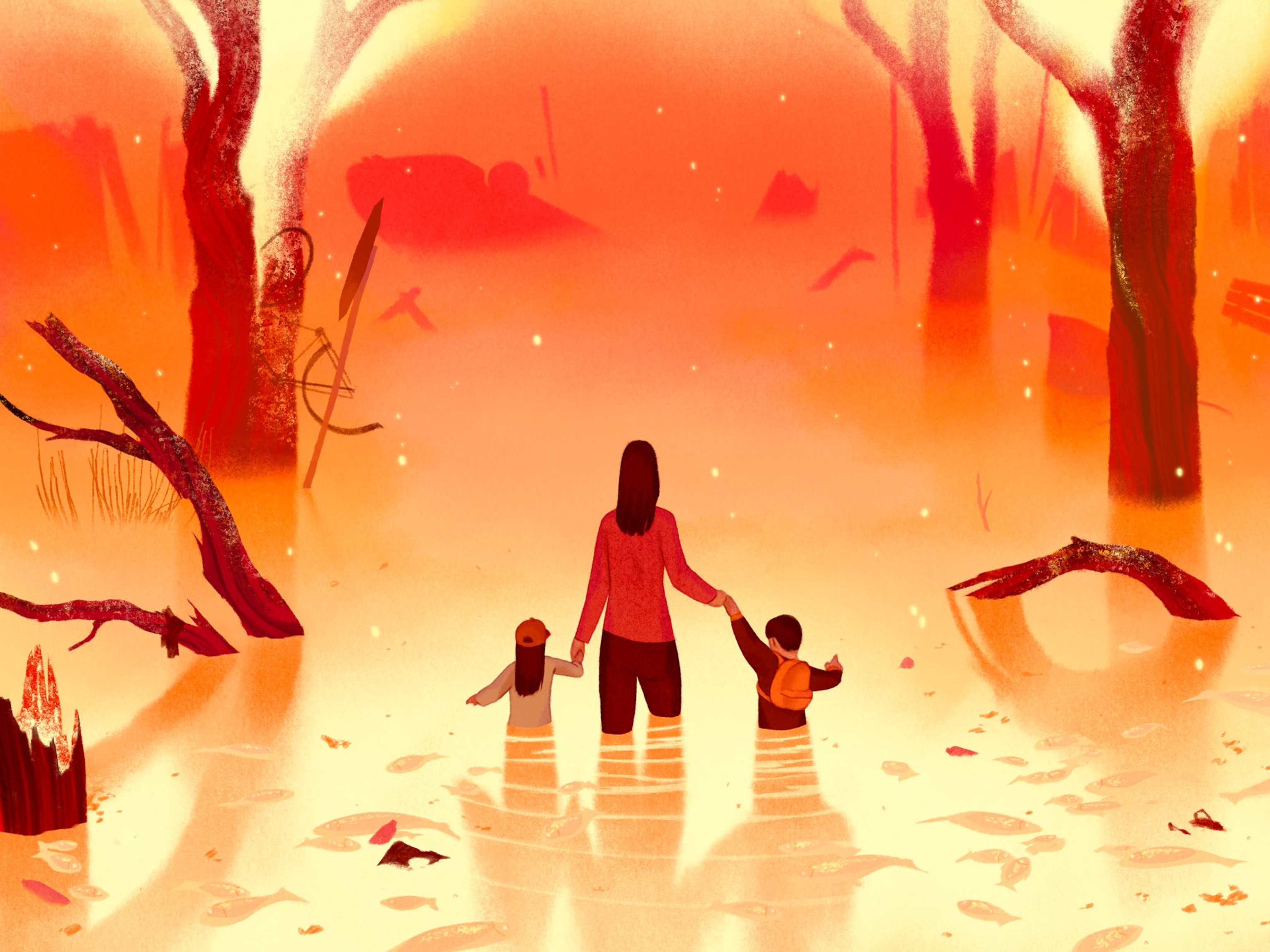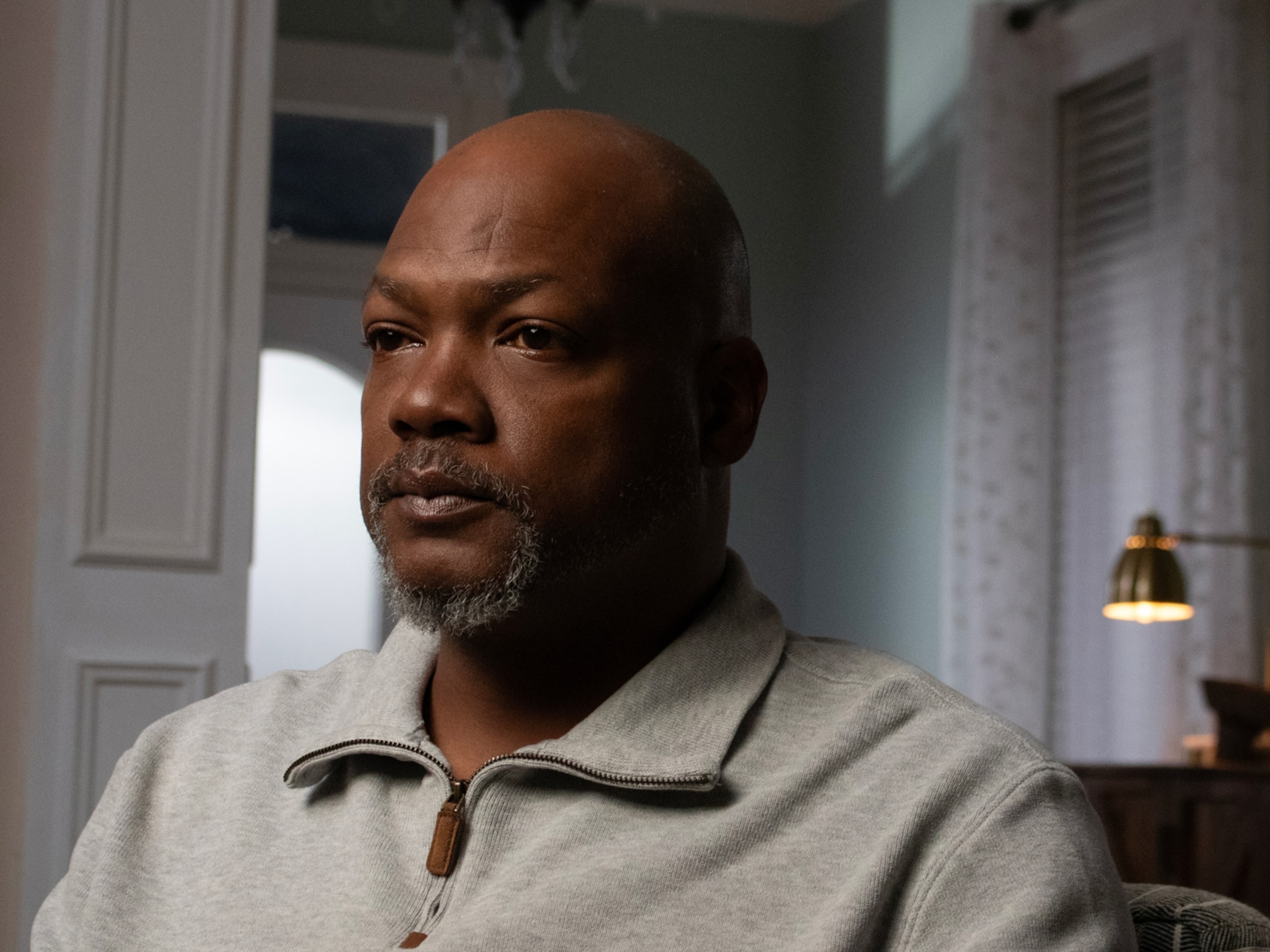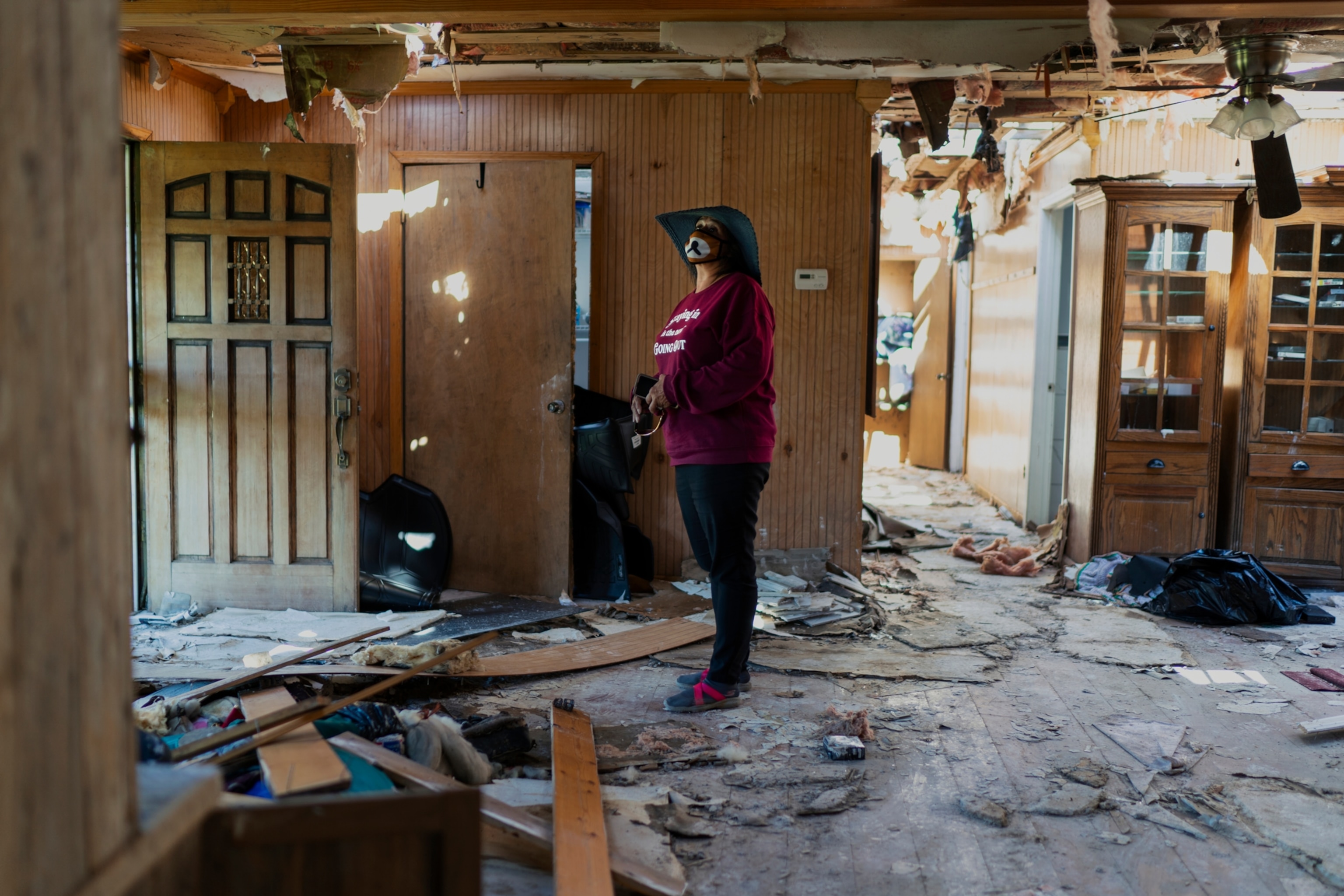
How many 'natural' disasters can one city endure?
As another hurricane bears down on Louisiana, the town of Lake Charles—hit twice last year—faces the painful questions of climate change: How can we adapt, and who is going to pay?
Judy Jolivette and her husband, John, have lived most of their lives just outside Lake Charles, about 30 miles inland from the fragile, storm-battered coast of southwest Louisiana. Last year, Hurricane Laura peeled away most of their roof. Six weeks later, Hurricane Delta came along and finished the job. The Jolivettes now call home a converted tool shed as they wait out delays that stalled construction of a new house.
They are of mixed mind about ever living through another ordeal like this again. But for now, they are rebuilding for sentimental and practical attachments. “We have no place else to go but here,” says Judy. “Since we first built our home, it’s been 38 years on this property.”
Now, Hurricane Ida is expected to become, “an extremely dangerous major hurricane when it reaches the coast of Louisiana,” according to the National Hurricane Center. Ida arrives as hurricane season moves through what forecasters call the “season of the season”—the eight-week period between mid-August and mid-October when 96 percent of the most destructive hurricanes occur. The Jolivettes’ struggle to rebuild is representative of a whole region still cleaning up from last year’s “season of the season,” when Laura and Delta hit on Aug. 27 and Oct. 9, respectively.
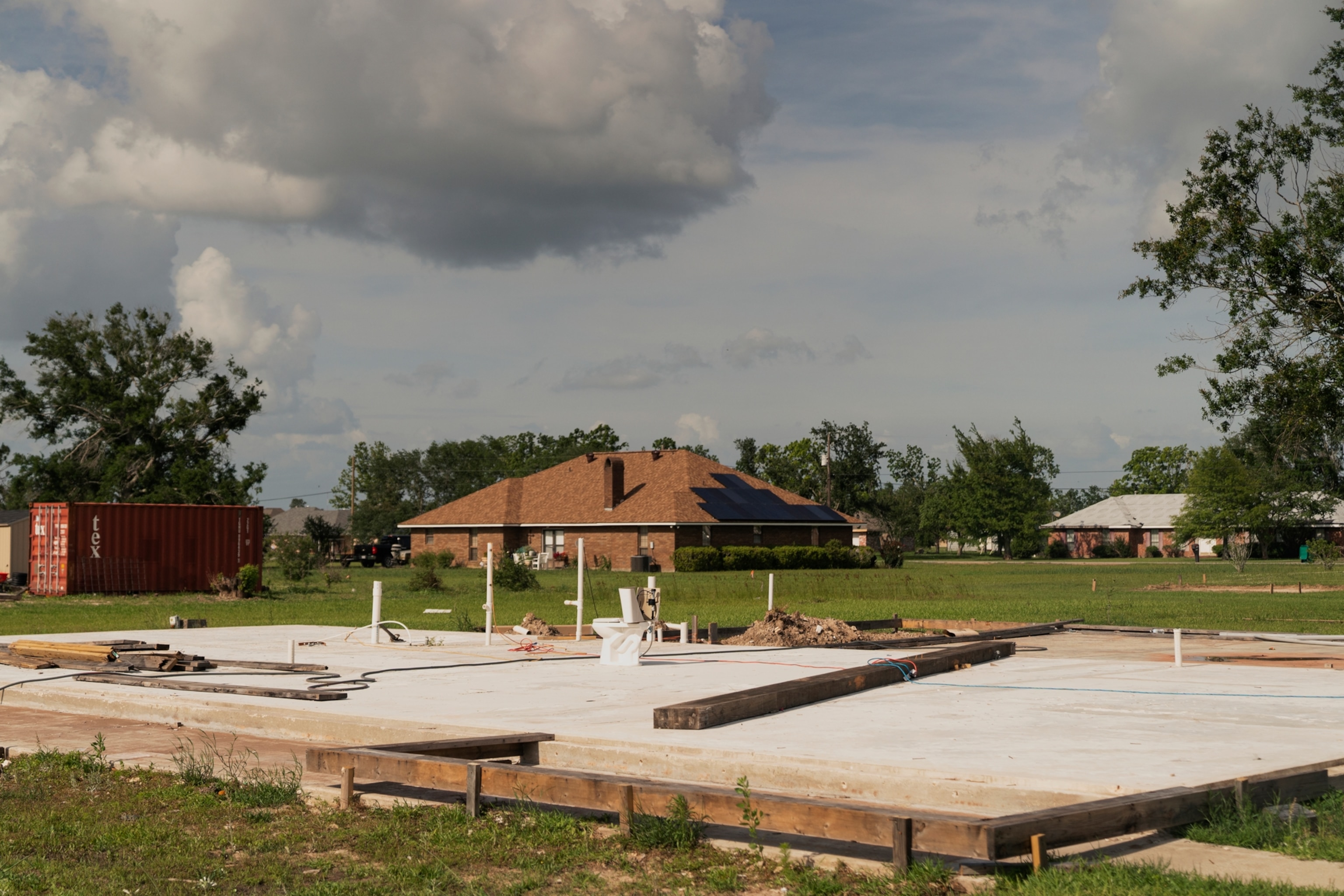
One year later, Lake Charles’ experience is also emblematic of something larger: the riskier future that a growing number of communities face as a result of climate change—coastal communities in Louisiana and elsewhere confronting rising seas, mountain towns out West facing longer and more destructive fire seasons, inland communities everywhere, from Tennessee to Germany, facing intense rains and flooding without the infrastructure to protect them. All these places are different and yet they all face the same questions: How can we adapt so we can stay in the places we love? How much will it cost? And who is going to pay?
Together, the twin storms caused nearly $23 billion in damages and shredded more than 50,000 houses in Calcasieu Parish, according to an assessment by the consulting firm McKinsey. In a region that is a petrochemical industry hub and already short on affordable housing, the loss of housing has been one of the most devastating and long-lasting effects. Residents whose lives are in various degrees of disarray are not remotely prepared to take another hit.
Everyone is on edge, says Alberto Galan, an assistant to Calcasieu Parish Administrator Bryan Beam. “Every time there’s a report of something developing in the Atlantic, we get worried. That anxiety, that’s community wide.”
A record-breaking string of disasters
Laura delivered 150-mile-per-hour winds as a Category 4 storm and the most powerful hurricane to sweep over Louisiana since 1856. Delta, a mere Category 2 by the time it made landfall just east of Laura’s beachhead, followed her track into Lake Charles, a working class city of 78,000 and the parish seat.
The hurricanes only began the misery. Over the winter, a hard freeze broke pipes, leaving thousands without potable water. Then, in May, a deluge dropped over 18 inches of rain in a single day—and set off a 1,000-year flood that forced homeowners who had just finished hurricane repairs to gut their houses all over again.
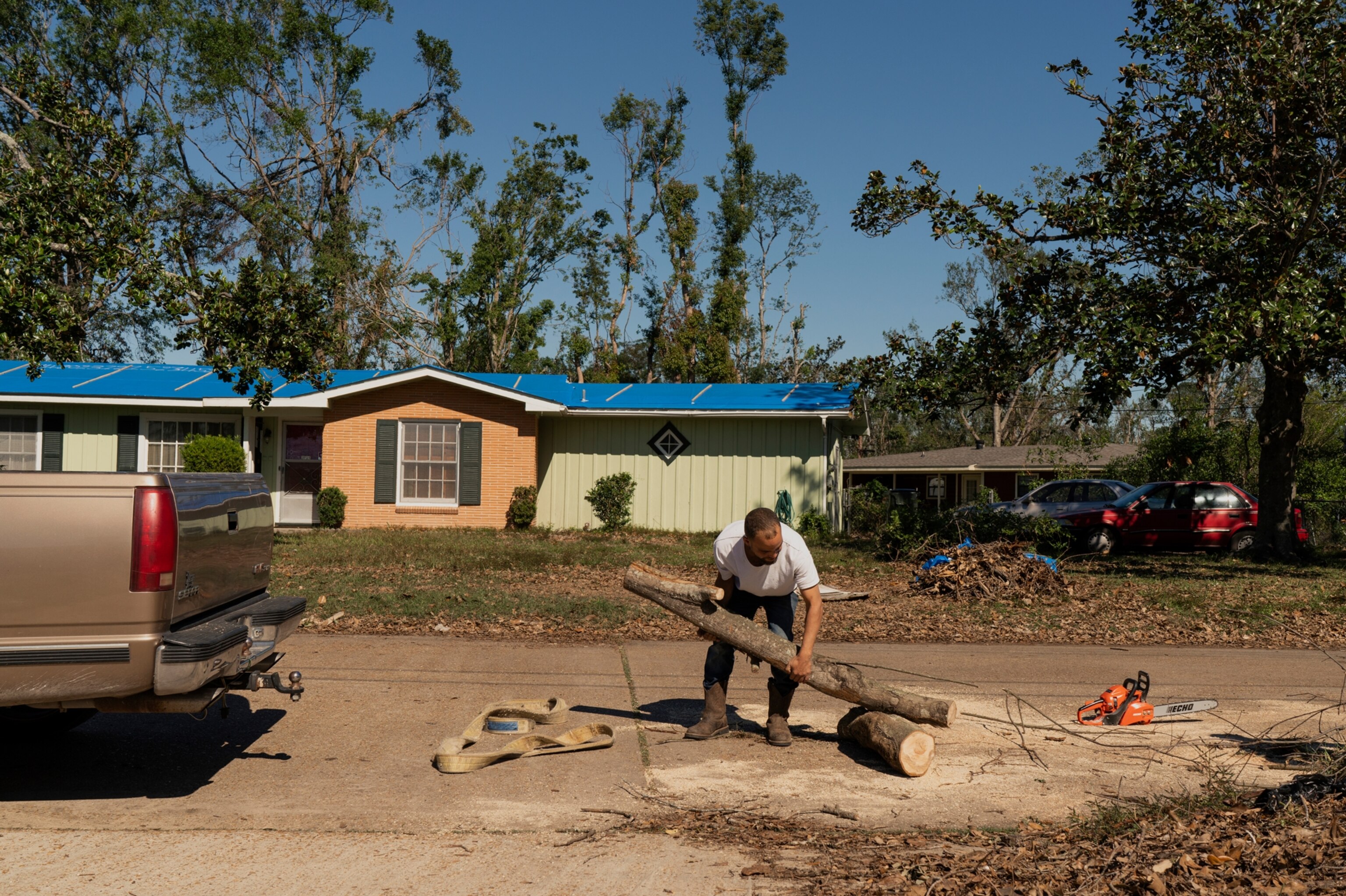
All four weather events became federally-declared natural disasters—a tally that city officials say is more than experienced by any other community in American history.
“I just don’t have the words anymore for what we’ve been through,” says Lake Charles Mayor Nic Hunter. “There’s almost a bit of PTSD. Every time it starts raining it gets uneasy.”
The mayor, a Republican serving his second term, has made a campaign of trying to wrest federal disaster funding from Congress. He pleads the case to anyone who will listen. Lake Charles, he said at his swearing-in ceremony last month, faces “the greatest challenge in a generation, her greatest hour of need.”
Hunter would like to see a program akin to The Road Home Program that dispersed more than $9 billion to residents displaced by Hurricanes Katrina and Rita in 2005, and helped close the gap between insurance payouts and the actual cost of rebuilding. Louisiana Gov. John Bel Edwards has asked the federal government for $3 billion for damage from the 2020 storms around Louisiana; he says he expects the state to receive half that amount.
Hunter points out that the federal government responded more quickly for earlier storms. Federal disaster funding arrived just 10 days after New Orleans’ levees broke during Katrina; 34 days after Andrew flattened much of South Florida in 1992; and 98 days after Superstorm Sandy swept along the entire eastern seaboard from Florida to Maine and flooded New York City in 2012.
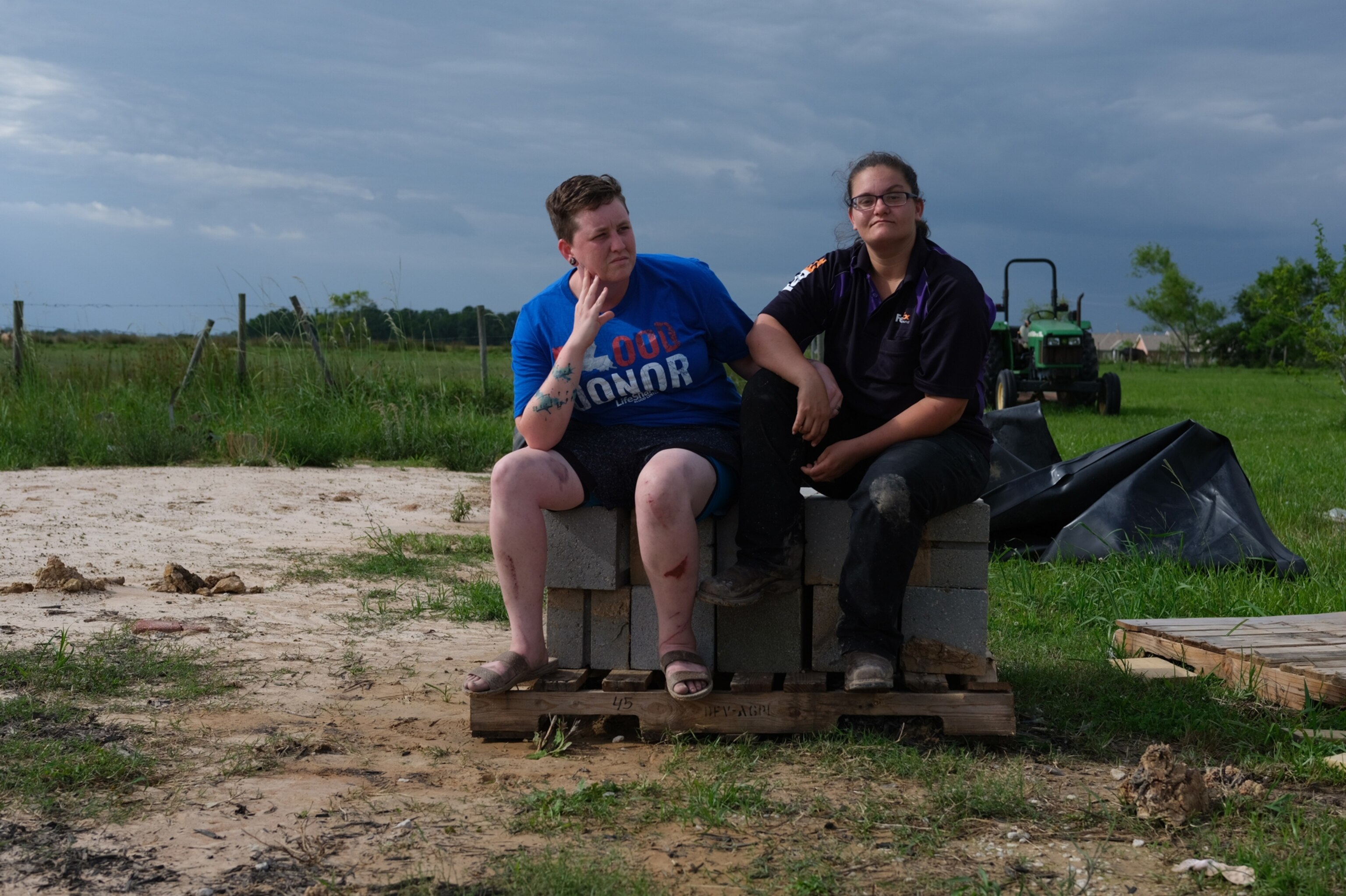
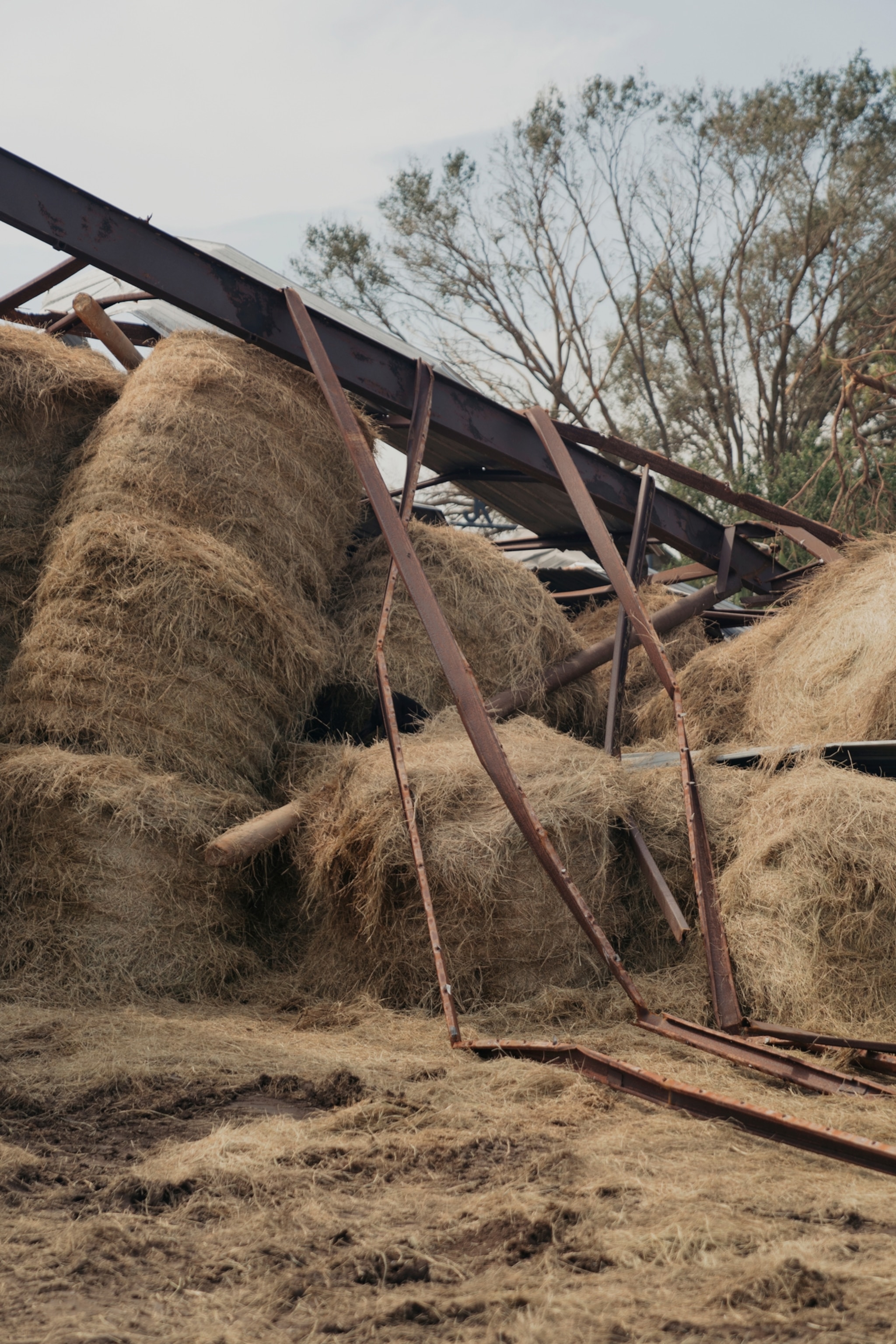
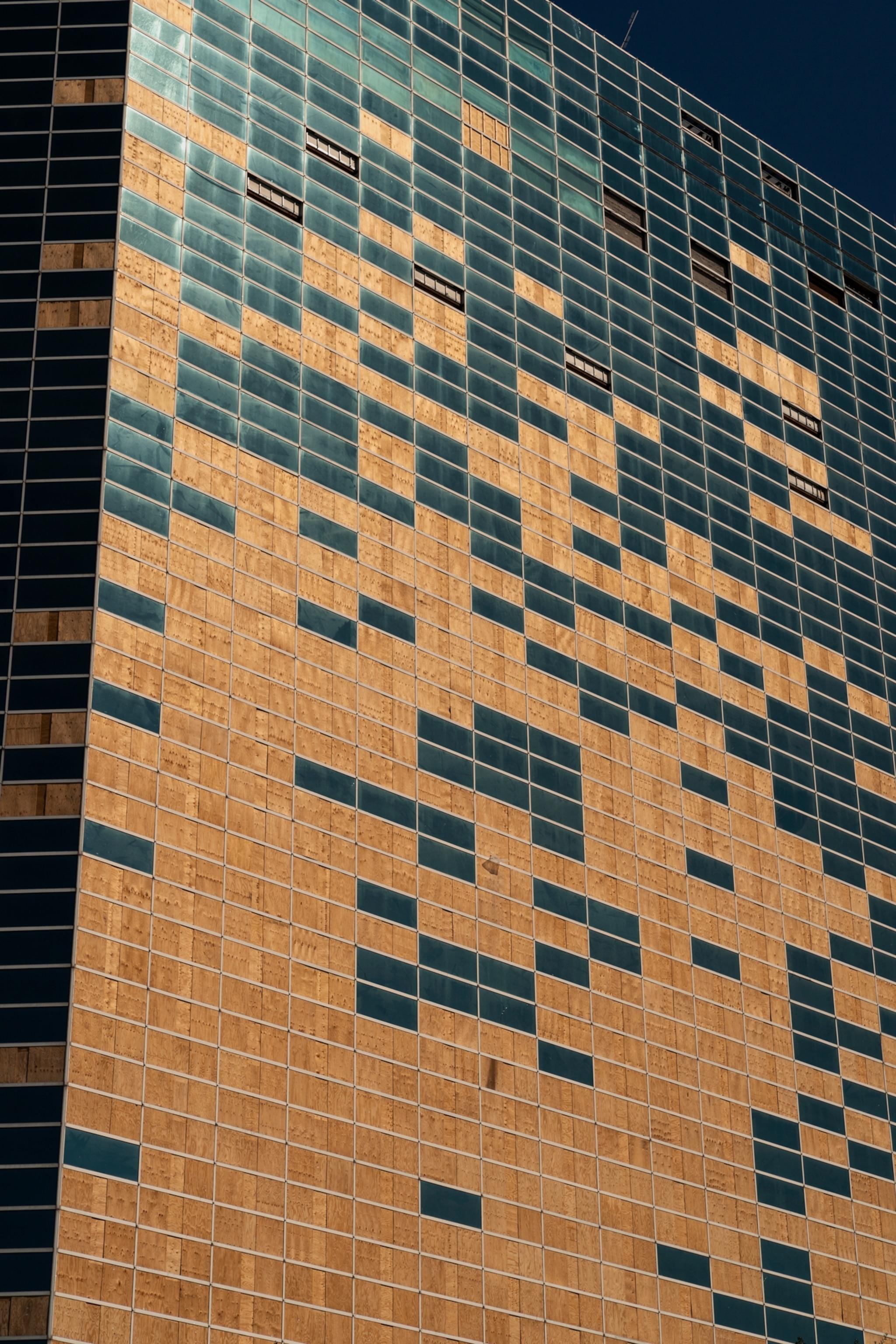
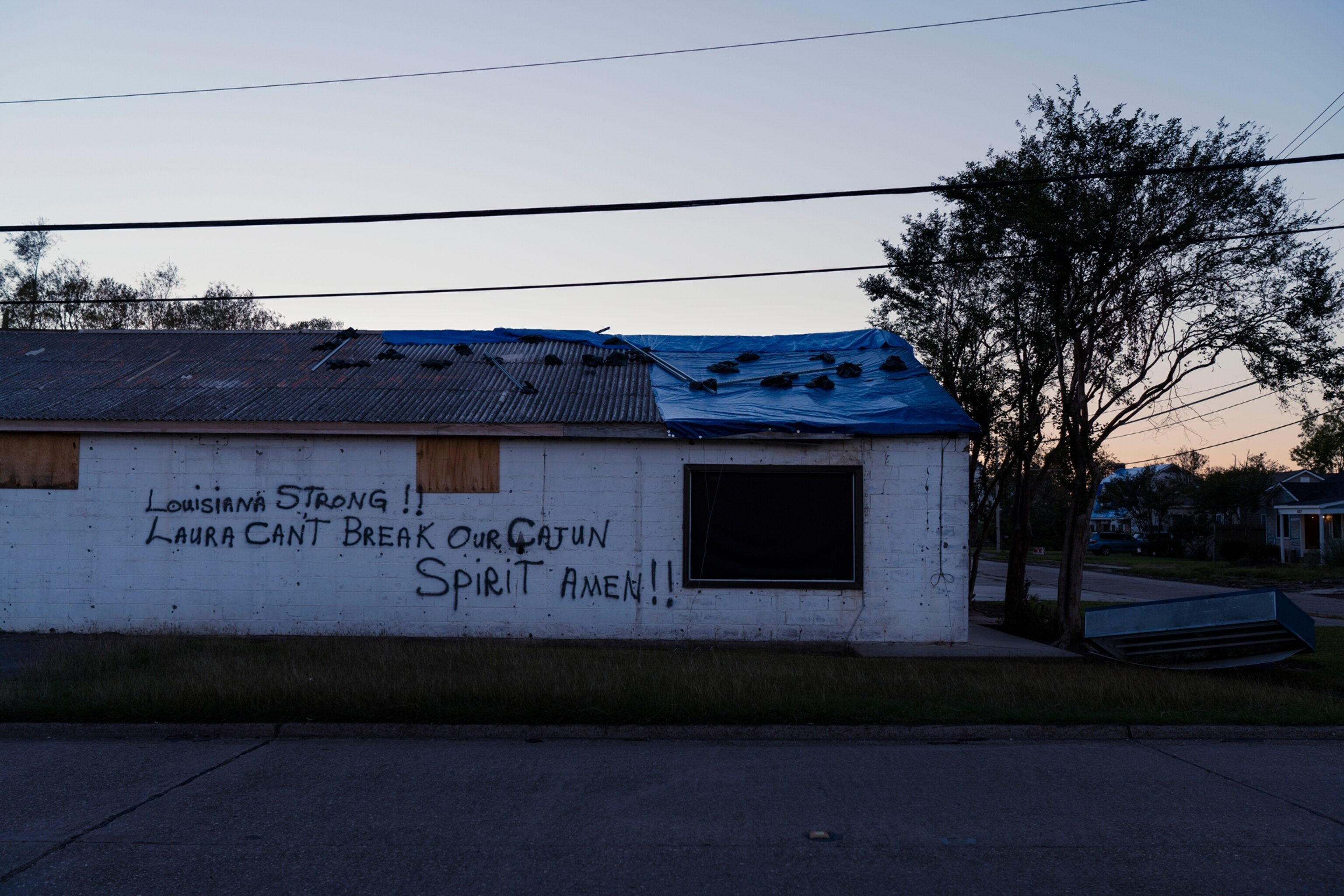
So far, FEMA has said it will reimburse Lake Charles $46 million for debris removal and the state $56 million for sheltering hurricane evacuees in hotels. But southwest Louisiana has not received any supplemental disaster recovery funding. Both President Donald Trump and President Joe Biden visited Lake Charles, promising help. But sympathetic words, even from presidents, don’t rebuild caved-in roofs, and Hunter posted a sharp criticism on his mayoral website: “It is simply unfathomable and unconscionable that American citizens are still struggling and suffering due to inaction in Washington, D.C.”
Now, with Laura’s first anniversary approaching Friday and attention focused on more recent disasters—the flash floods in central Tennessee, Tropical Storm Henri in New England, the fires out West—Hunter says Lake Charles feels forgotten.
“Once you get past the year on these events, the mindset moves on to other issues,” he says.
A window into the future
Even so, Lake Charles’s effort to regain its footing may yet offer a window into what the future of disaster recovery looks like. Katrina and Rita impacted more people, but they occurred before widespread acknowledgment of how climate change is rewriting weather patterns.
Already some hurricanes are remaking themselves into slow-moving deluges. Hurricane Harvey, which hit Houston in 2017, dumped 60.58 inches of rain in nearby Nederland, Texas. Delta dropped between 15 and 20 inches on the Lake Charles area, adding flood damage to the already wind-battered region.
The latest report published this month by the United Nations Intergovernmental Panel on Climate Change (IPCC) makes the strongest link yet between global warming and changes to the weather, and predicts that severe weather events will become more intense and destructive. That fundamental conclusion, experts say, is ground-breaking—not because it’s a surprise, but because it forces political leaders to face up to the reality of how climate change increasingly threatens their constituents.
The mayor of Lake Charles acknowledges the shift. “I find it really difficult for someone to look me in the eyes and say this climate is not changing,” Hunter says. “I have strong opinions about someone saying it’s been a terrible string of bad luck.”
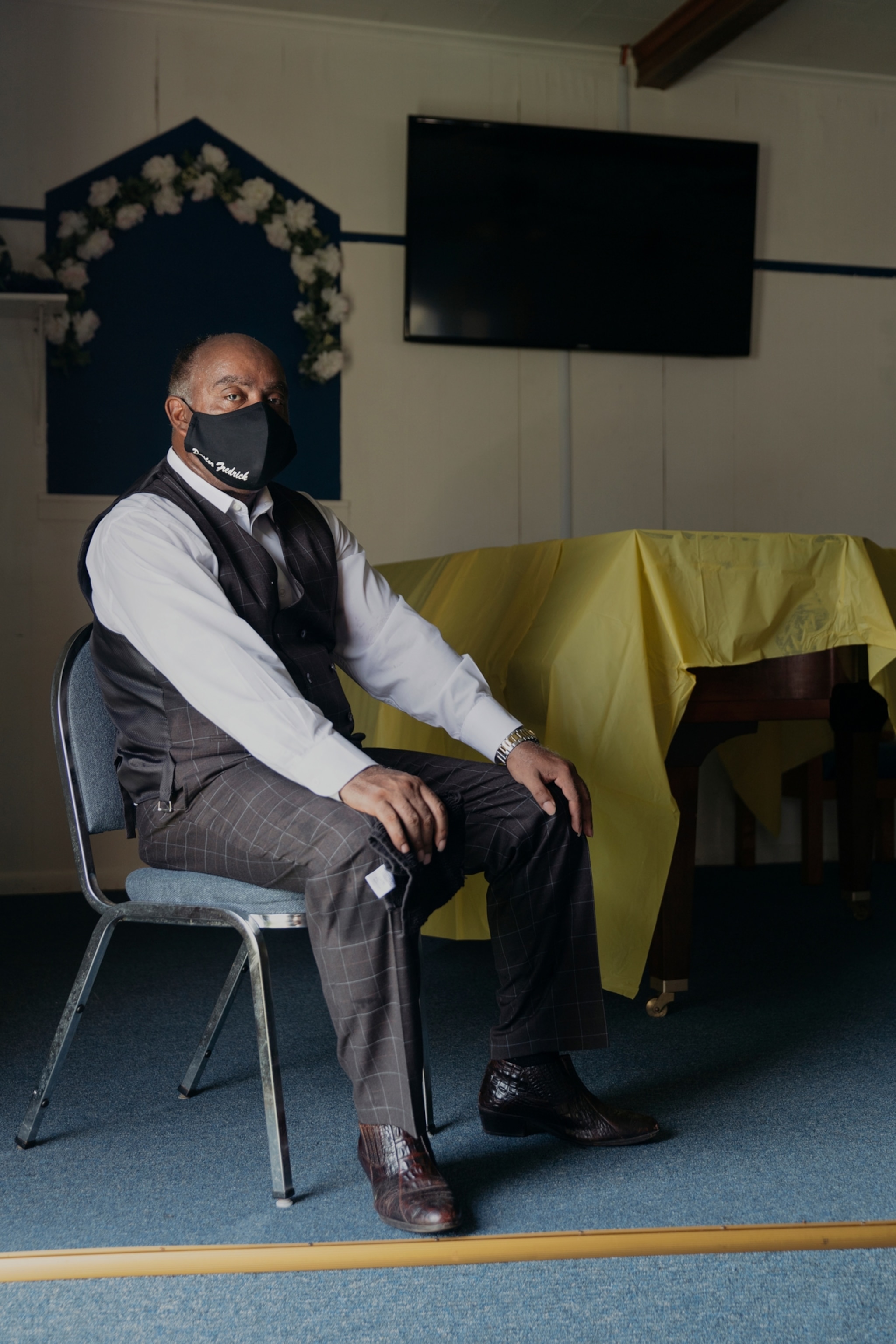
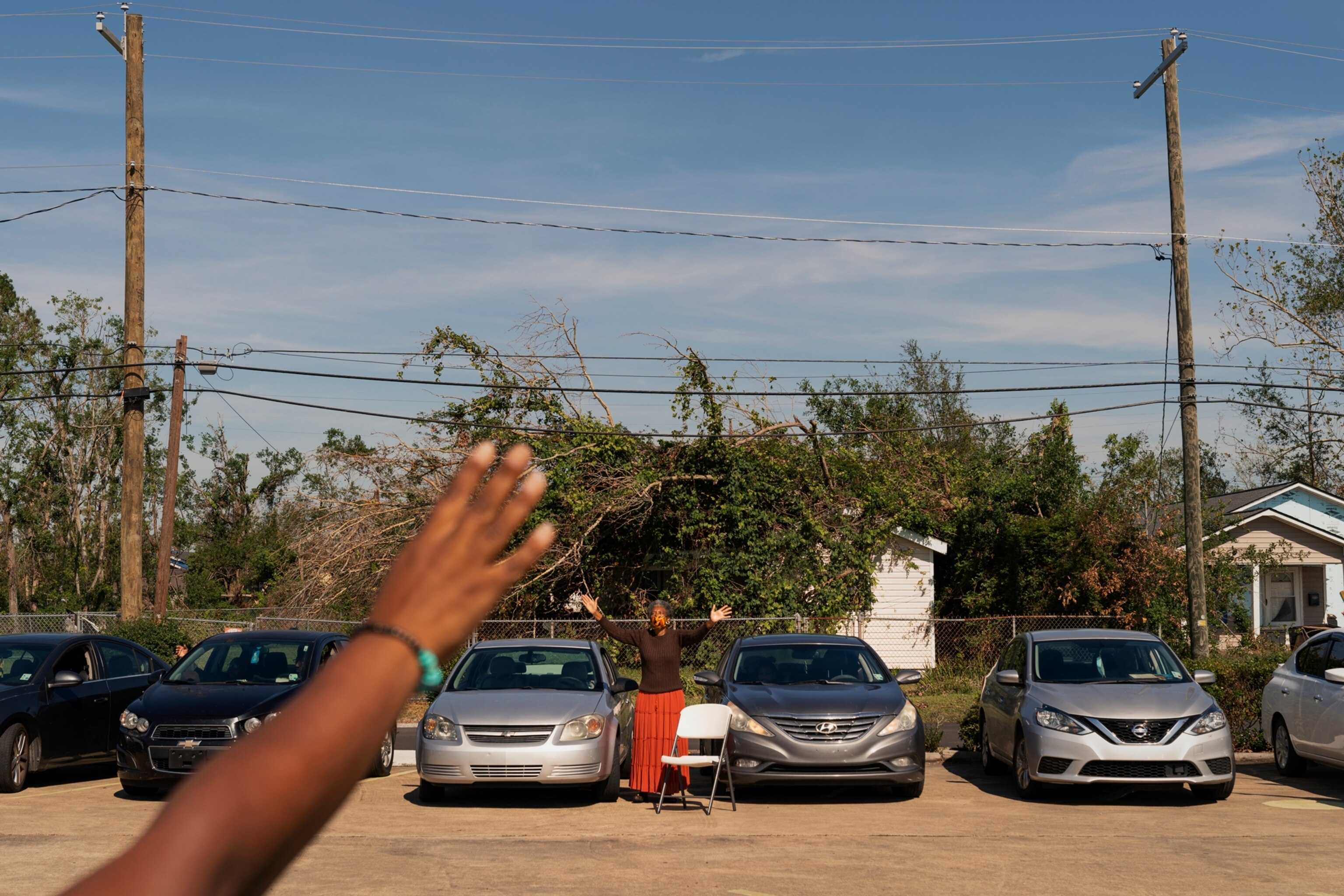
As climate change intensifies, programs like the Road Home may not be affordable in future decades, says Craig Colten, a geographer at Louisiana State University in Baton Rouge. Each flood or wildfire that races through another town—like the California Gold Rush town of Greenville, which was devoured by flames this month—puts more Americans on the same road, needing and demanding help to get back home.
“With repeat storms, with storms of greater intensity, places like Lake Charles will face greater and greater difficulty getting the kind of federal support they have come to expect,” he says. “And with the proliferation of other disasters, there is greater competition for federal disaster aid along with decreasing generosity on the part of Congress.”
Colten thinks that will contribute to the gradual decline of coastal cities. “They will become places with low income residents who can’t depart and high income residents who can afford to fortify their homes. So you end up with a highly skewed population, more vulnerable populations, and fewer people who are critical to enduring and rebuilding after a disaster.”
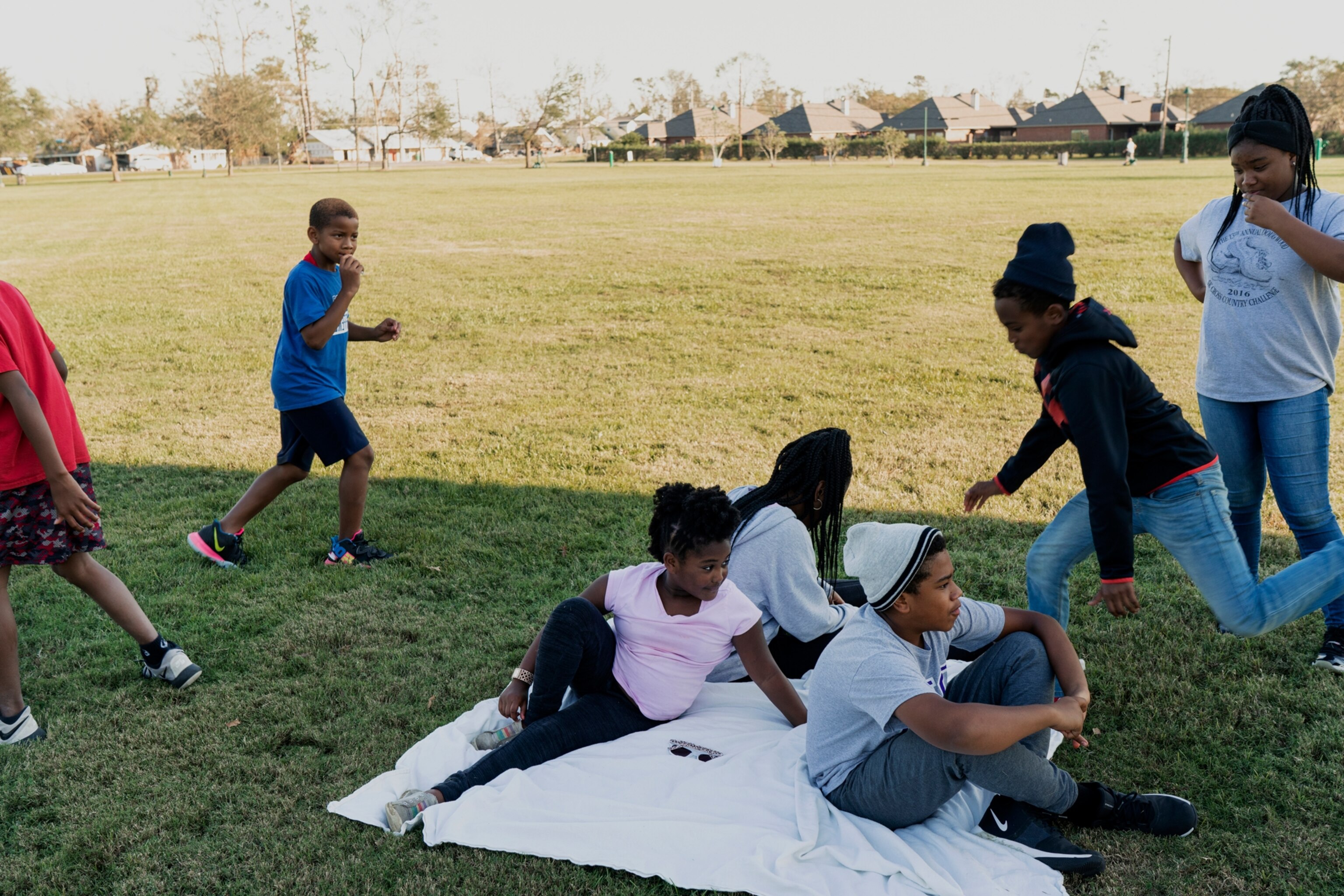
Allison Plyer, chief demographer at the Data Center, a data analysis non-profit in New Orleans, which tracked the city’s recovery after Hurricane Katrina, says coastal residents who do stay often do so because they have no choice.
“Many homeowners have a fair amount of equity in their homes,” she says. “To simply abandon a home without rebuilding or selling it, they would have to walk away from that equity, which in many cases is the majority of their accumulated assets.”
Hunter, the mayor, is hoping all of his constituents can rebuild their homes.
“The city of Lake Charles is going to be here in ten years. It’ll be here in 100 years,” he says. “If we don’t get supplemental aid, what will happen to the most vulnerable? The underserved neighborhoods? The city will get through this one way or another, but what’s going to happen to some of our residents who are the most vulnerable?”
Roishetta Sibley Ozane, a single mother of six, counts herself among the region’s most vulnerable constituents. She lost everything to Laura, as she did to Rita in 2005. She and the kids still live in a FEMA trailer just west of Lake Charles. She co-founded and runs the mutual aid network, The Vessel Project, which supplies food, clothing and other essentials to other hurricane victims.
“Our low-income, predominantly Black, single moms, Latinx, they’re struggling,” she says. “They’re trying to decide if they pay rent or feed their children. They lost everything.”
Despite the hardship, the threat of climate change, and the lack of federal aid, Ozane’s staying.
“We know that climate change is happening,” she says. ”If we don’t have people like me who are speaking up about what’s going on and trying to ensure our voices are heard, I feel like southwest Louisiana could be wiped off the map.”
Lake Charles, just 30 miles from the Gulf Coast, could one day be on the coast: The eroding Louisiana coastline is disappearing at the equivalent of a football field every hour, according to the U.S. Geological Survey.
A long road to recovery
Founded in 1861 and once a hideout for pirates, Lake Charles today owns the nation’s 11th largest port and the region, with a network of gas and oil pipelines, is the beating heart of southwest Louisiana’s petrochemical industry. Lake Charles is also home to three luxury casino resorts, and the two industries generate billions of dollars for the local economy and a reliable supply of jobs.
Before the storms, Lake Charles was one of the fastest-growing cities in the nation.
In their aftermath, Lake Charles lost nearly seven percent of its population, according to a New York Times analysis of U.S. Postal Service change-of-address requests for 2020. It was the largest out-migration from any urban area in the country during the pandemic year.
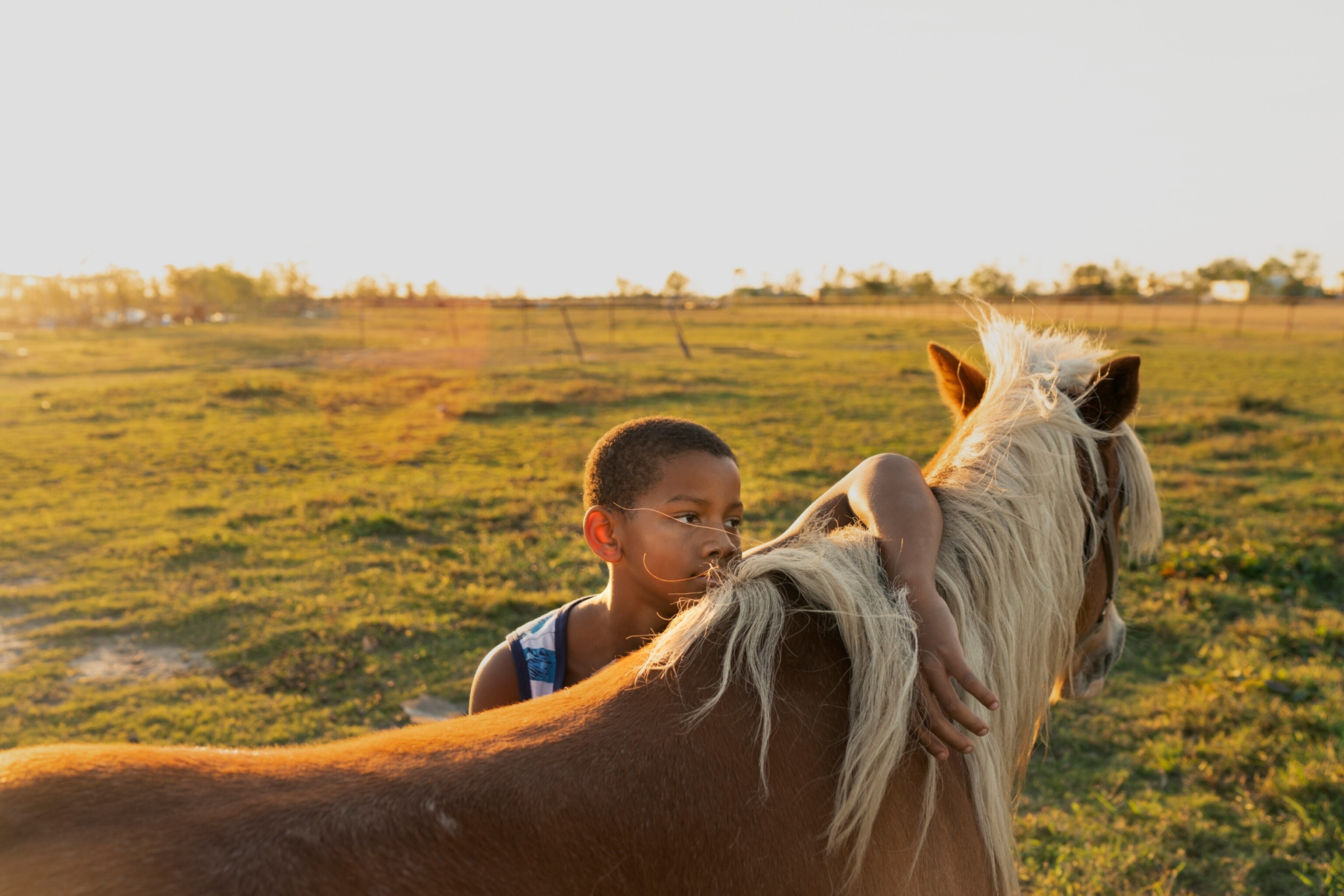

Ninety percent of the city’s homes were damaged by the hurricanes, with total damages assessed at $235 million. Thousands of people are still living in “unsustainable or unhealthy housing,” officials say. Nearly a fifth of local businesses have not renewed their occupational licenses, and 60 percent of public housing is uninhabitable. Today, Calcasieu Parish is once again a Covid-19 hotspot, thanks to a low vaccination rate and the rapidly-spreading delta variant.
Galan, the parish administrator’s assistant, says the recovery is still in “short-term mode” and focused on power restoration, water restoration, and debris pickup. FEMA only carted off the last loads of residential debris on Aug. 9. The parish has started updating its infrastructure, installing backup water tanks and generators in hospitals and other essential buildings.
Galan also oversaw the writing of a 137-page long-term recovery plan that calls for projects like constructing more affordable housing, improving drainage, and issuing buyouts to reduce the number of homes at risk. “We don’t want to not anticipate more significant rain events, more frequently over time, for whatever reason that might be,” he says. “We can see the coastal erosion happening. We can see rising tides.”
But much of the plan requires federal funding, and without it, officials say a “true rebuild” may not be possible.
Bayou roots run deep
There are no reliable estimates for how many residents have returned home—or still intend to. Hunter says he expects Lake Charles’ population to recover. In the Louisiana bayou country, roots run deep. The region is populated by old hurricane hands whose resilience, resourcefulness, and sheer ability to endure endures.
Even Colten, the geographer, concedes the point. “What you see in coastal Louisiana is a powerful attachment to place,” he says. “People know just one place. They know it intimately.”
He adds, “There’s a defiance that ‘we’re not going to give in to these storms.’ They feel they know how to handle hurricanes. It’s like going to the gym, they build strength by enduring more.”
In the little town of Iowa, east of Lake Charles, the extended Jolivette family is a testament to that spirit. Judy’s younger brother, Hurricane Thomas, is a 63-year-old crawfish farmer and proud of his name: He was born at home in the bathtub in 1957, when his mother went into labor just as Hurricane Audrey swept across southwest Louisiana and east Texas. The storm killed 500 people and remains the strongest hurricane to make landfall in the United States in the month of June.
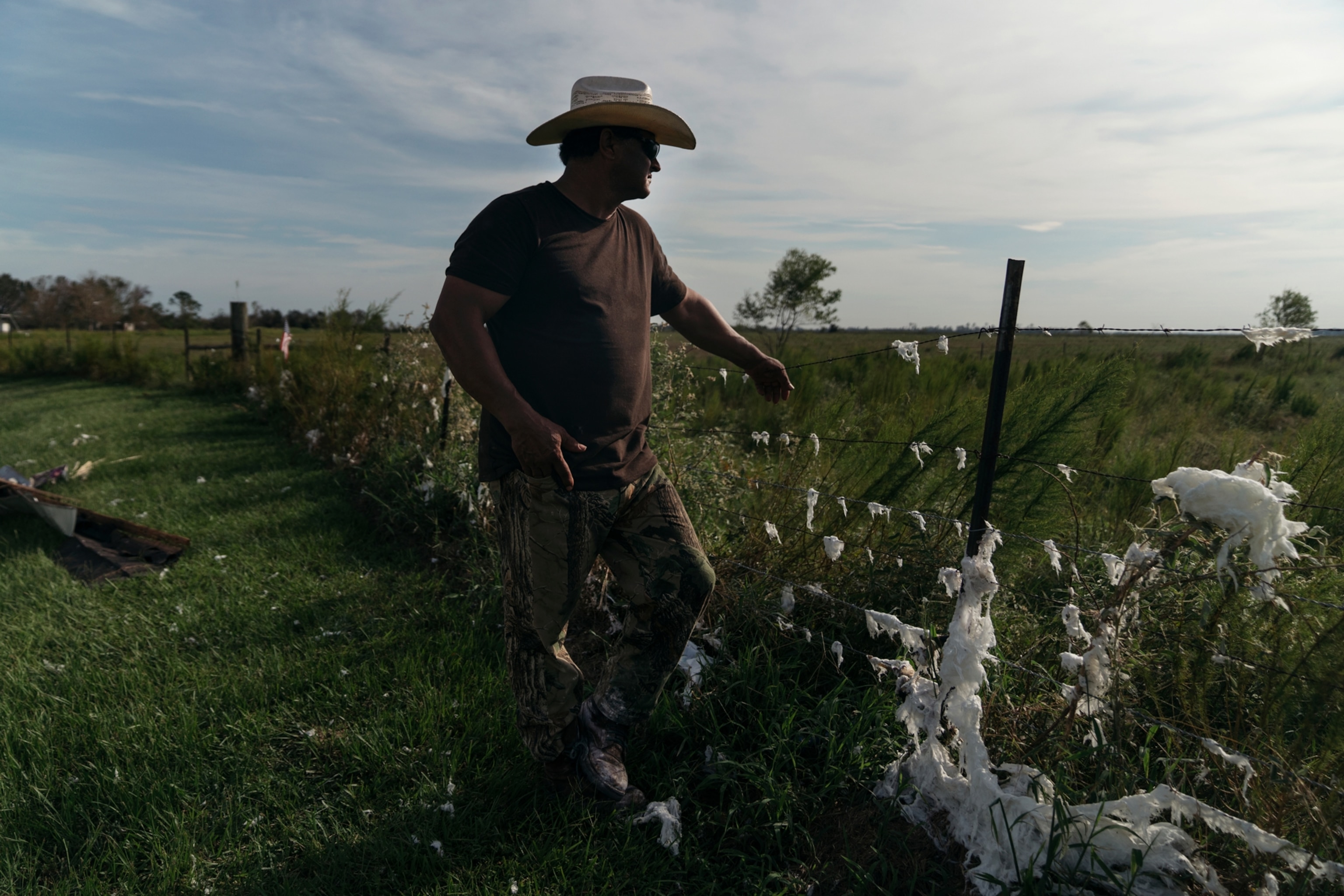
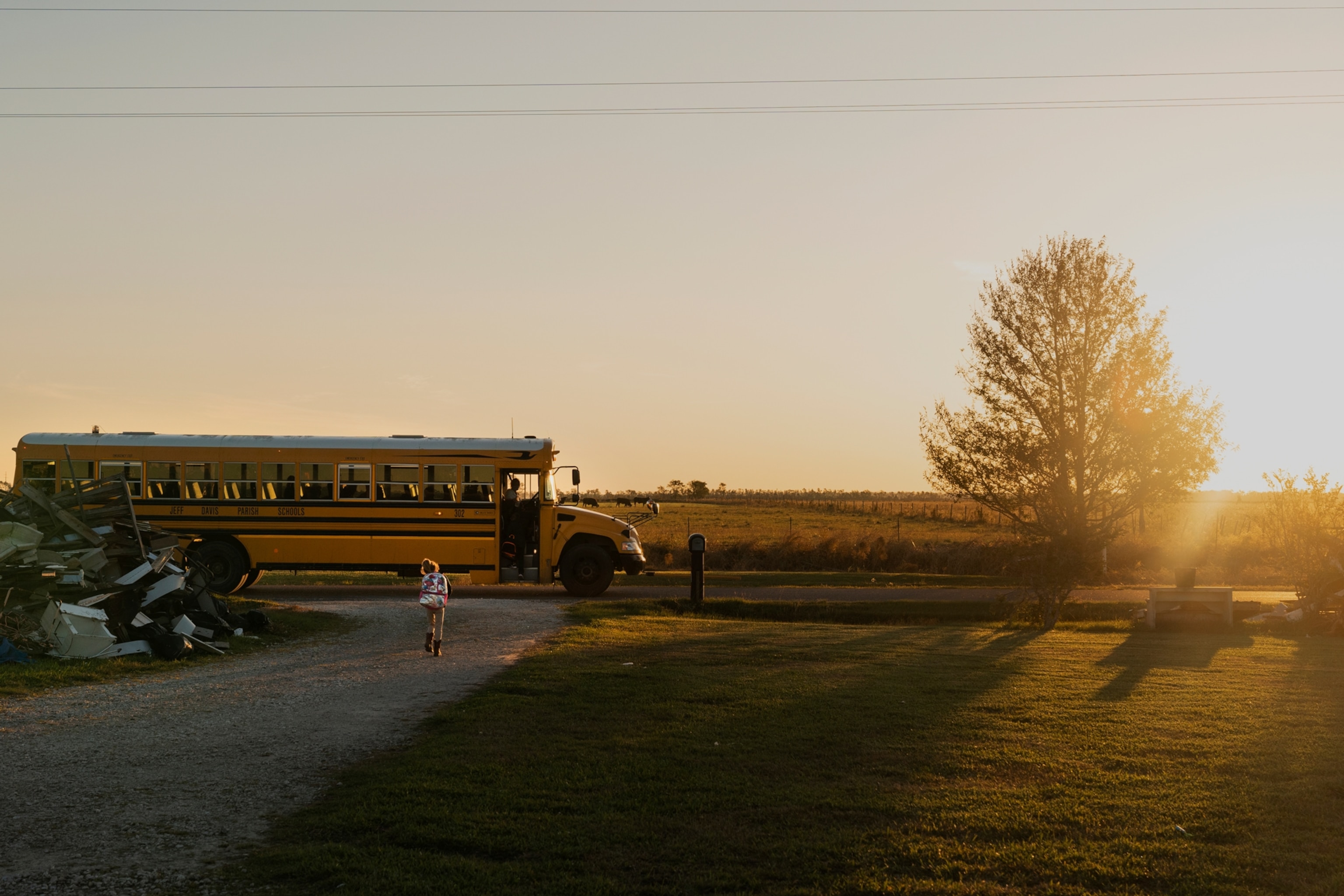
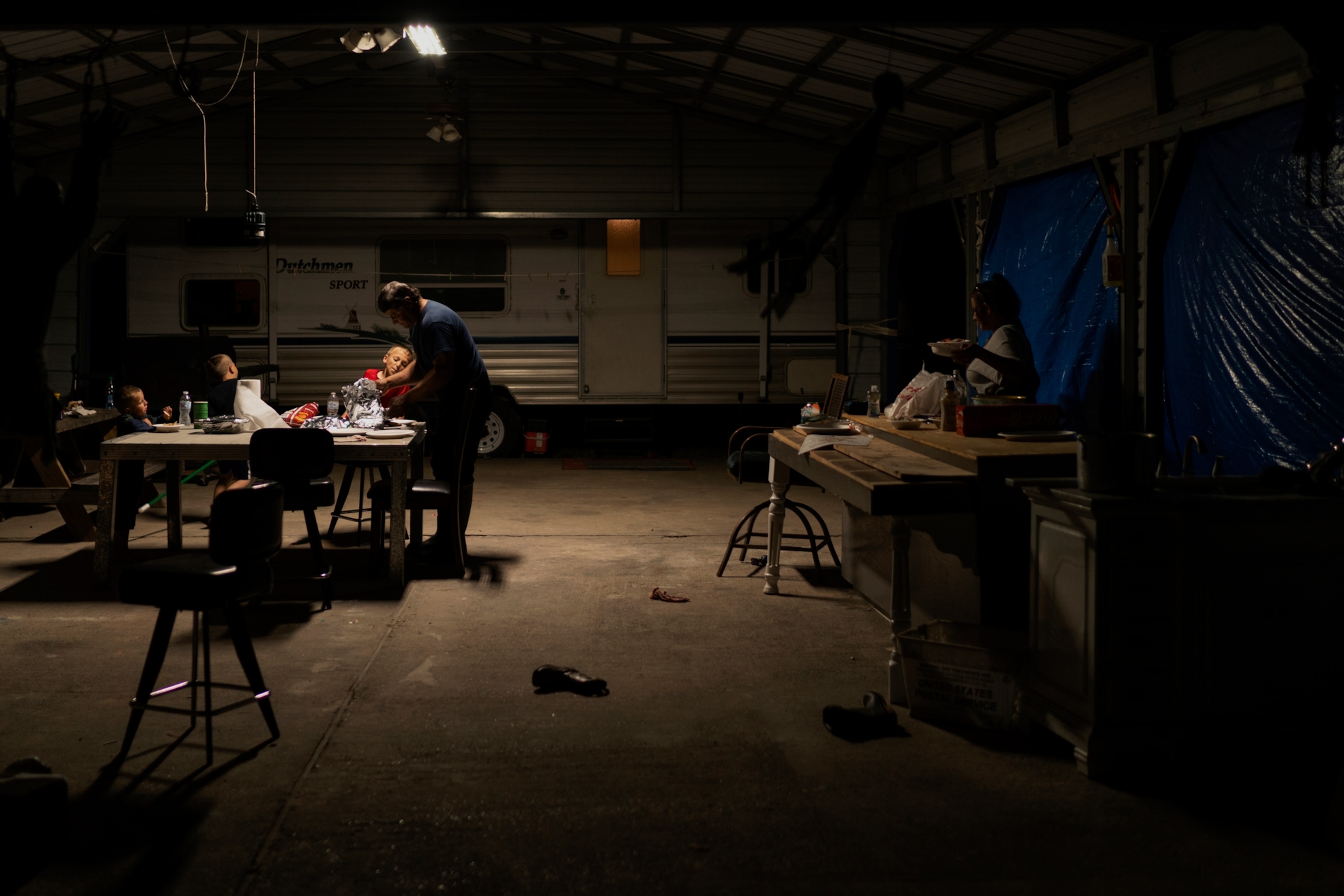
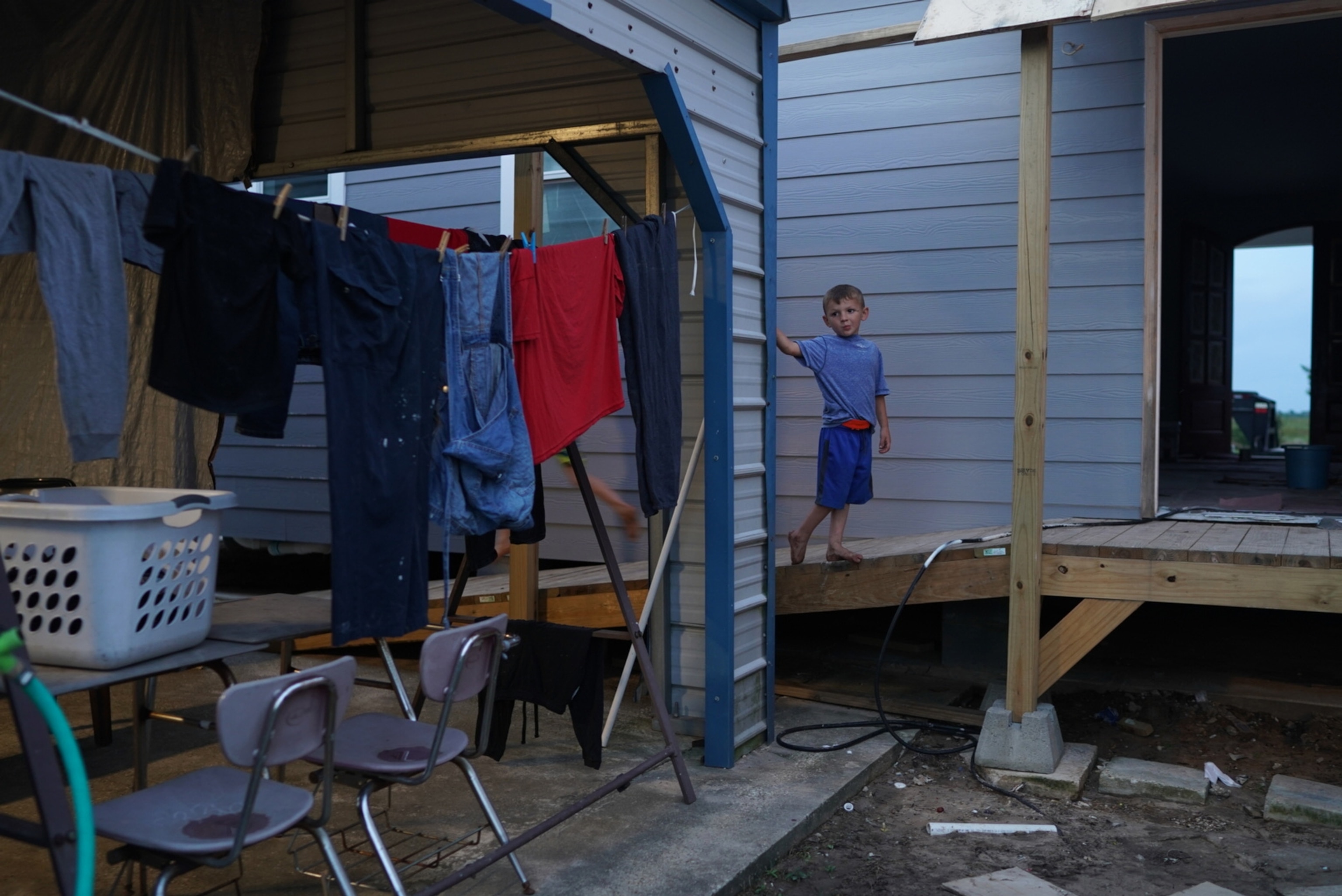
As a grown man, Hurricane has taken three direct hits and rebuilt each time. A 1999 storm with a name long forgotten took his roof. He lost one again in 2005 to Hurricane Rita. Then Laura, with an assist from Delta, demolished the whole house, leaving no other option but to bulldoze away the debris and rebuild. He and his wife, Debbie, moved into the new house last month.
“I was born and raised down here,” Thomas says, by way of explanation. He doesn’t plan on leaving. During Laura, both couples evacuated and bounced around Texas and Louisiana for a while. When the Jolivettes returned and found their home demolished, they retrofitted their 30-by-30-foot car shed, adding a bathroom, kitchen, closet, and insulation. Their contractor, who was juggling multiple construction jobs, framed the new house and then abruptly stopped showing up.
John Jolivette tries to put the best face on staying. “If you live up north, you go through tornadoes,” he says. “Everywhere you go, there’s something with the weather. At least for the hurricane we have a warning.” But as the ordeal has consumed a year, even these hurricane veterans are rethinking their options for when the next time comes, as it surely will. Debbie Thomas says she stayed because her family is here, and her husband wanted to rebuild. But next time, she’s looking to relocate. John Jolivette says he and Judy will do the same.
In the meantime, the Jolivettes recently found a new contractor. The latest estimate for the completion of the house is November.
This story has been updated with new information about the latest storm forecasted to strike Louisiana.
Annie Flanagan is a documentary photographer focusing on issues surrounding gender, sexuality, and trauma in the United States.




